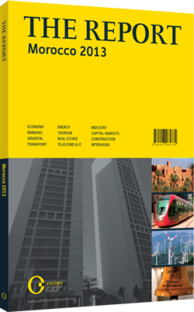OBG talks to Guy Hachey, President, Bombardier Aerospace

Interview: Guy Hachey
What are some of the benefits of investing in a greenfield manufacturing facility in Morocco?
GUY HACHEY: Over the last decade, the aerospace industry has expanded, opening new markets and new opportunities. This has enabled companies to improve cost competitiveness while reducing reliance on third parties for aircraft components. For us, the choice of Morocco was driven by a number of factors, not just proximity to our existing manufacturing facilities in Europe. These include internationally competitive manufacturing costs, low shipping and transportation costs, the availability of skilled labour and a commitment by the government to develop the aerospace industry.
Given the dominance of foreign aeronautics manufacturing, how can domestic growth occur?
HACHEY: The attraction of global aerospace champions to Morocco is a potential first step in fostering the growth of a domestic aerospace sector. For example, Bombardier Aerospace seeks to build a global supply base and industrial footprint in different countries, supported in each case by a local supplier network. We have successfully implemented this model in countries like Mexico. In Morocco, we will collaborate with local and global companies to develop a supply base of technical expertise and increase our global resource pool.
How can Morocco remain attractive to foreign investors in light of pressure on production costs?
HACHEY: The pressures on Morocco’s cost competitiveness are not unique to the kingdom; it is our experience that these pressures are felt to a similar extent across many emerging economies, especially in a sector like aerospace. While attractive on a cost basis, Morocco also has a broad range of comparative advantages that the kingdom can leverage to attract global companies, including international free trade agreements and a government committed to the development of key industries and willing to invest in both infrastructure and education. While some industries – and the associated foreign direct investment (FDI) – may be driven by lowest-cost considerations, I believe investments in high-value-added industries like aerospace respond to best cost rather than lowest-cost incentives. That is to say, global companies in our industry are attracted to countries that can offer a satisfactory level of quality at a reasonable cost. As well, the presence of international firms encourages more FDI, as total domestic manufacturing costs decrease through proximity. In aerospace, Morocco is well positioned with the existence of other large players, such as Safran, Matis Aerospace, EADS Maroc Aviation and Zodiac.
How easy is it to find qualified, talented labour for technically demanding manufacturing industries?
HACHEY: We consider the availability of a talented workforce with the qualifications necessary for our technically demanding industry to be a potential challenge to our Moroccan venture. We are confident that the actions taken by the government through its investment in education will help us meet that challenge.
Indeed, during our evaluation of Morocco, education was one of the key factors considered. The country offers a high level of general education, a strong education culture and a dedication to cutting-edge industries. On top of that, the government has invested in vocational training for the aerospace sector. The government’s aerospace training plan includes specific training for up to 15,000 employees with varied profiles by the end of 2015. The government also worked to create the Institut de Métiers Aeronautiques (IMA) within the Nouaceur Free Zone, working with companies to tailor the training programme to address our specific sectoral needs. The IMA’s first 400 students recently graduated; the IMA aims to increase its graduation rate to 600 students in 2013 and 800 from 2014 onwards. Looking forward, we are confident that the drive demonstrated by Moroccans to learn the industry skills required will help to overcome labourrelated challenges as the sector’s expansion continues.
You have reached the limit of premium articles you can view for free.
Choose from the options below to purchase print or digital editions of our Reports. You can also purchase a website subscription giving you unlimited access to all of our Reports online for 12 months.
If you have already purchased this Report or have a website subscription, please login to continue.

